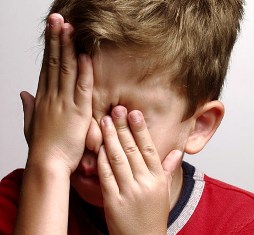Children eye care |20 September 2017
Experience shows about 20% of children have some form of vision problem that requires either immediate attention or  ongoing assessment.
ongoing assessment.
A very high percentage of a child’s learning is visual. And the importance of vision in the personal, educational and social development of children is recognised by people close to them, rather than once in a blue moon screening, and they are no less than teachers! If a teacher suspects vision problem in a child she should refer the child to a properly trained optometrist for a thorough eye examination. I would attempt to list vision disorders that occur in children as:
Common problems
The most common problems are those affecting their inability to see clearly and sharply. These are MYOPIA (short sightedness), that is inability to see in the distance clearly; HYPEROPIA (long sightedness), that is difficulty in focusing on close objects and ASTIGMATISM which causes objects to appear distorted and out of focus at near and in the distance. These problems are easy to be recognised by the teachers. However, there are special problems which are not so easily recognized.
Other vision problems
The other group of vision problems particularly those affecting younger children involve their visual performance . These problems often escape detection in school vision tests and other vision screenings …..not paying attention in class, being slow in class and in learning to read, being withdrawn, not getting along with other children and poor sporting ability may be signs that a child is experiencing vision problems.
The following conditions are among this group of vision problems:
1 ) Poor coordination of the eyes :
Both eyes must work together efficiently otherwise one eye takes over from the other and the brain switches one eye off. This causes AMPLYOPIA, an amblyopic eye having a much inferior vision.
2) Turned eye (kaylous)
For normal vision both eyes need to look at the same object at the same time. If an eye is turned away the vision in that eye is poor and ignored by the brain. Eye exercises, spectacles or surgery may help in such condition.
3) Eye movement defect
Efficient eye movement is vital for reading, otherwise inefficient eye movement makes a child lose his place on the page and becomes a poor reader.
4) Poor hand-eye coordination
Hand-eye coordination is necessary for easy handling of objects within arm’s reach. Crooked writing with poor spacing between words and difficulty in staying on the line may indicate a child’s eye and hand are not working together. Special exercises may help.
5) Difficulties of focusing control
Some children have difficulties focusing. Objects change from being clear to blurry. The child will then have to exert some effort to keep the focus. Focusing from distance to near and vice versa efficiently is vital when children are copying from a distant board.
Teachers are advised to observe the following to justify their referral to the optometrists:
a) A child holds the reading material very close, he sits very close to the TV, rubs his eyes frequently, and has poor concentration. He may also write crookedly with poor spacing, leaves out or confuses words when reading or he may close one eye when doing close work.
b) A child complaining of headaches, double vision, itchy or burning / watery eyes or red eyes and poor vision should be referred.
In conclusion, a child’s eyes must be examined regularly. Ideally all children should be examined before the age of three and again before starting school. During their school years it is recommended that the eyes must be examined once a year or as advised by the optometrist.
Eddie J. Micock




